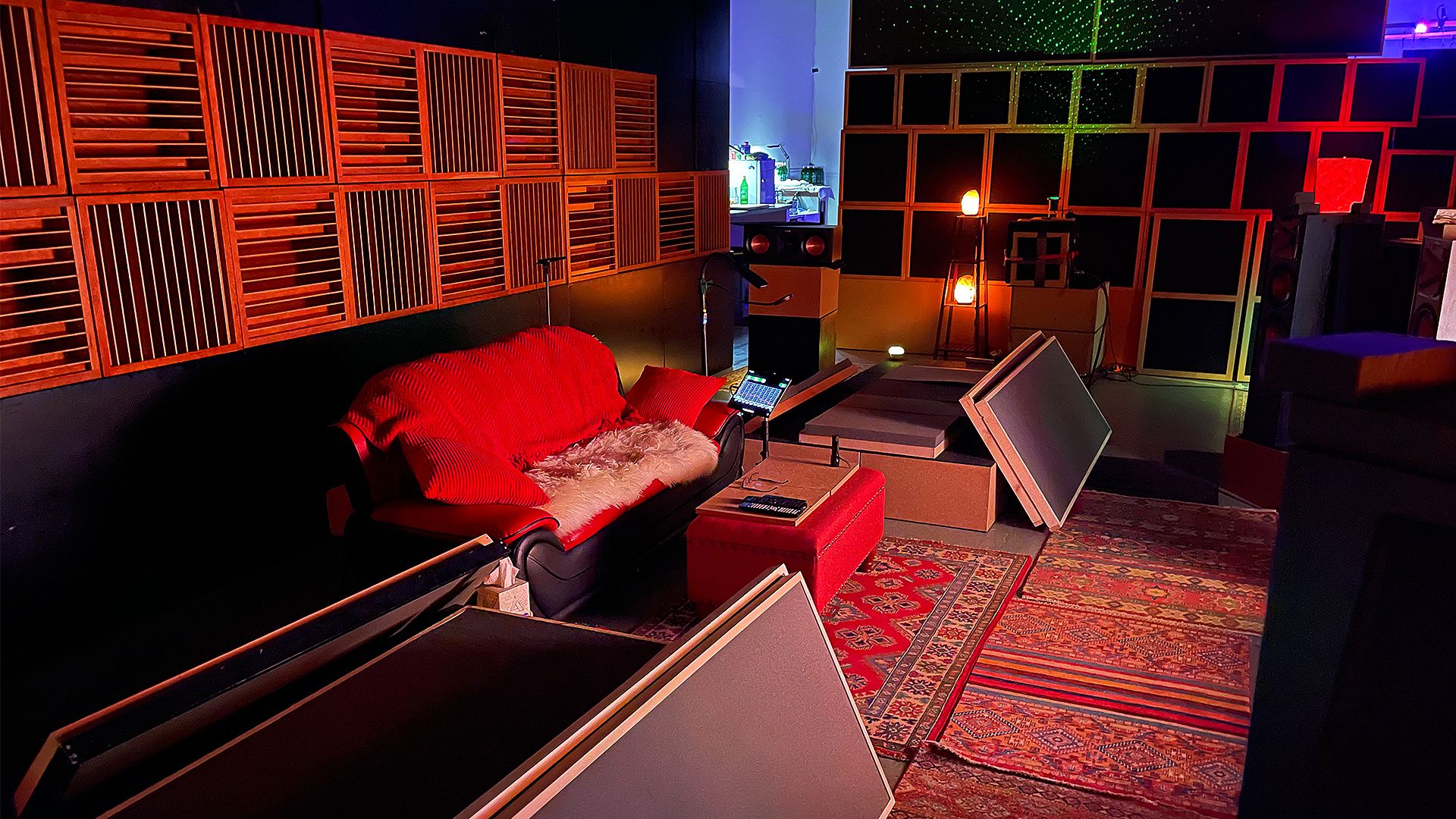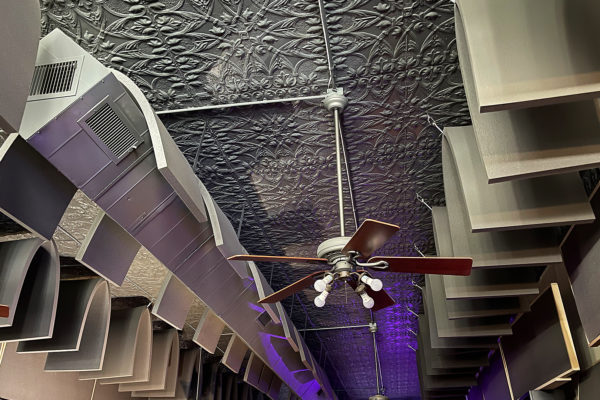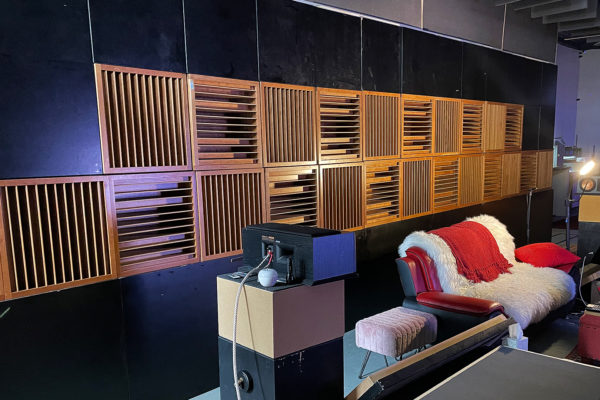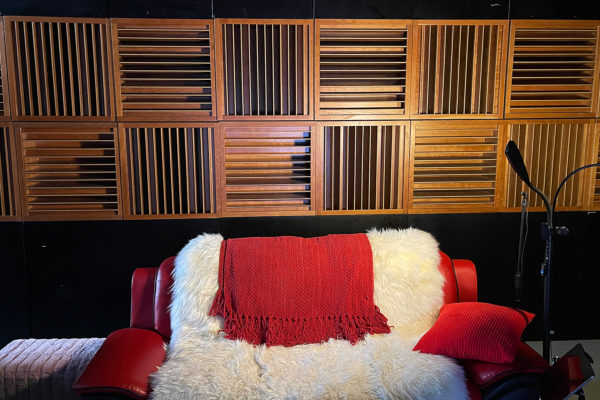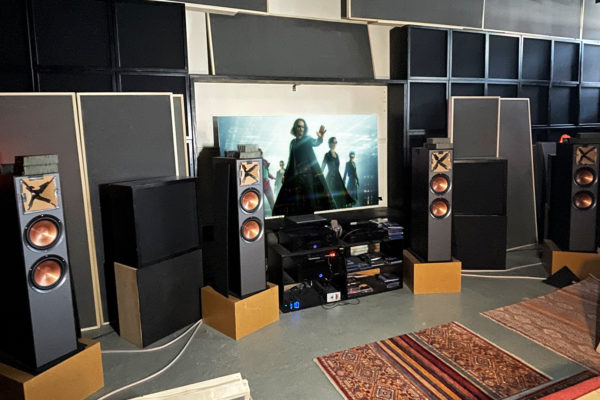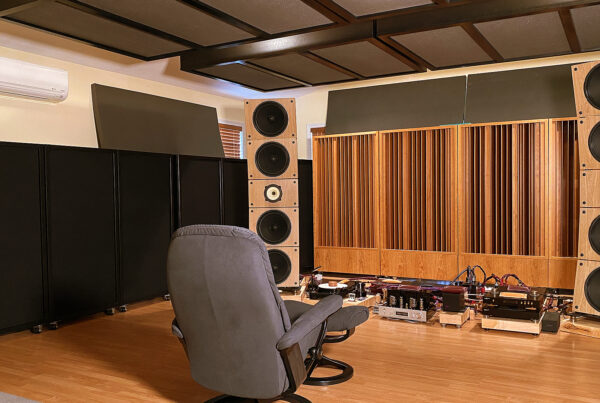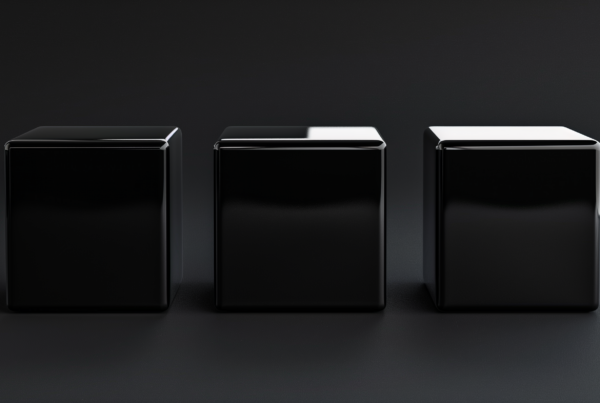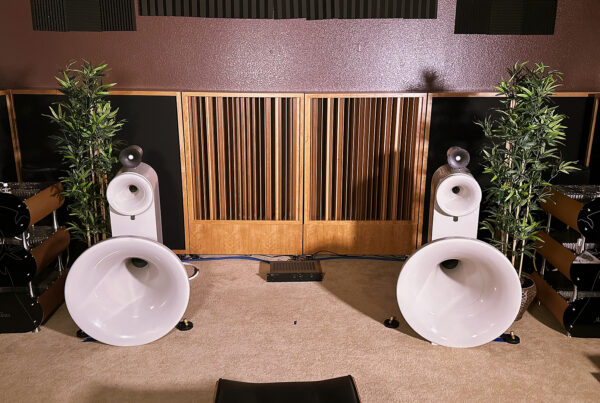Acoustic Fields Presents:
6.4
Research & Development Project
I have been involved with audio in some form for over 45 years. It has always been two channels. When I started, that was all there was. Two channels, a left and right channel that when set up properly in a room with appropriate volumes can produce a soundstage where I have experienced music and the emotions that go with it. For me, there is nothing like it. Two channels have always been part of my life and always will be. My first system was a Dual 1229 turntable, a Marantz amplifier, and JBL speakers. I remember it well. I even remember my first album which was James Gang Rides Again.
A unique setup
Multiple channel systems came and went. I remember the first multiple channel quadraphonic systems which were 4 speakers that were designed and I remember the marketing slogan to wrap you in sound. That approach did not last long and fell by the wayside along with my interest in multiple channels. Years passed and there were other multiple channel attempts but none could sustain. Finally, we were shown discrete channels where the engineers had separate channels to place certain sounds within and those channels would be positioned at certain locations within the room. We had front channels, center channels for dialogue and rear channels for surround sounds. However, when I looked at the systems, it appeared to me that it was only a marketing ploy to sell more boxes (speakers). All you had to do was examine the center channel speaker setup inside an equipment rack or above or below the screen. After many years of speaking with clients that were involved with multiple channel riggs, I was still not convinced it was for me.
That all changed when I treated a room for a client and listened to his responses regarding the sound quality. You can watch the video here. Craig’s comments on the presentation’s overall sound quality, the movement of energy and sounds throughout the room, and the impact the overall impression that was produced spiked my interest. Was it possible to create the same emotional connection I have had for years with two channels using multiple channels? How could placing more energy into a room produce the higher resolution required in order to connect with our musical sources? Is it possible to manage the energy from multiple channels in order to create a realistic experience? I decided to find out for myself and we set up a new research and development room. Our initial set up in our new facility includes many unique set ups based upon what we desire to achieve with our sonic strategy. First, let’s go back to that center channel. I knew that was one of the weak links in a multiple channel system.
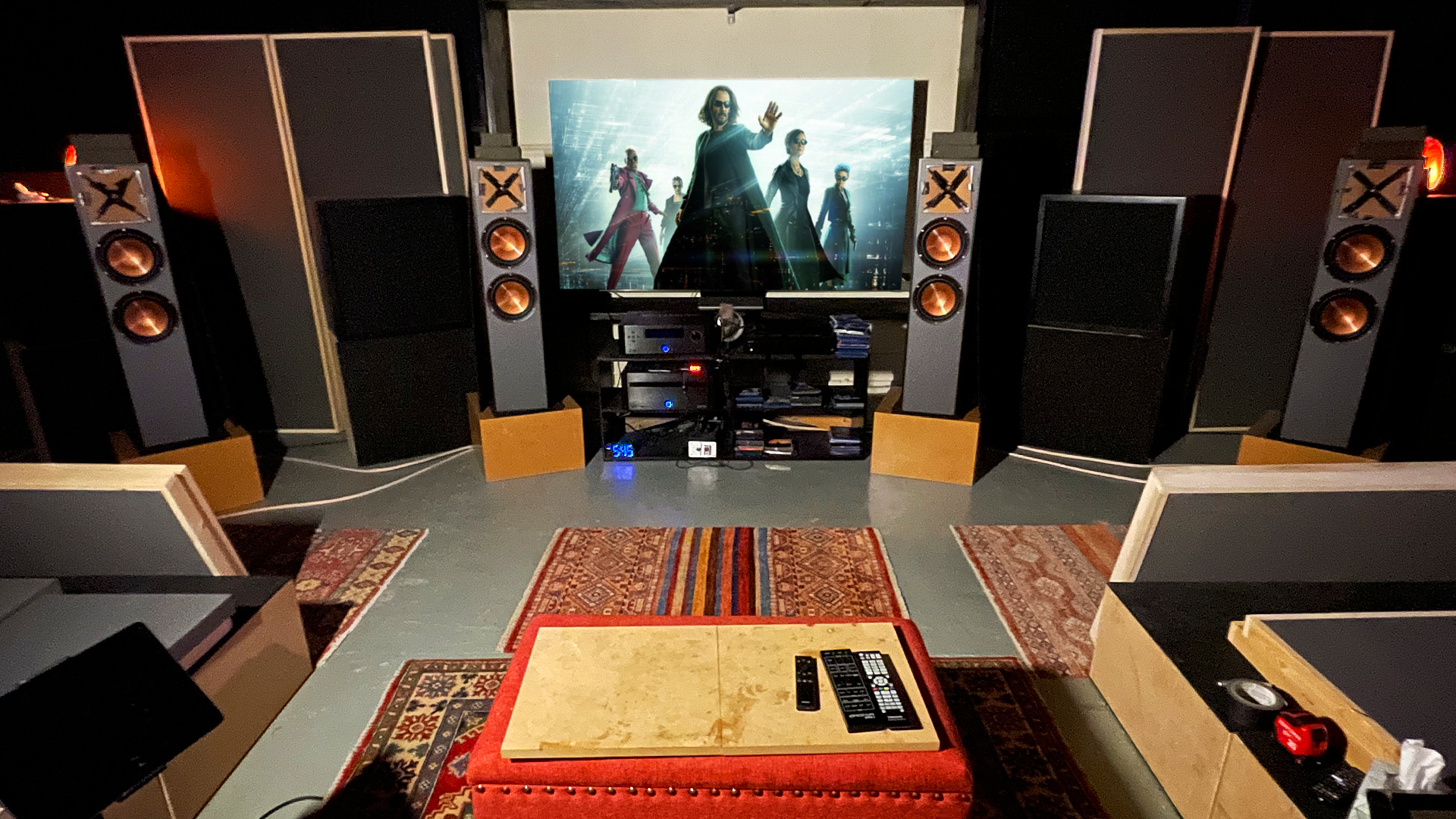
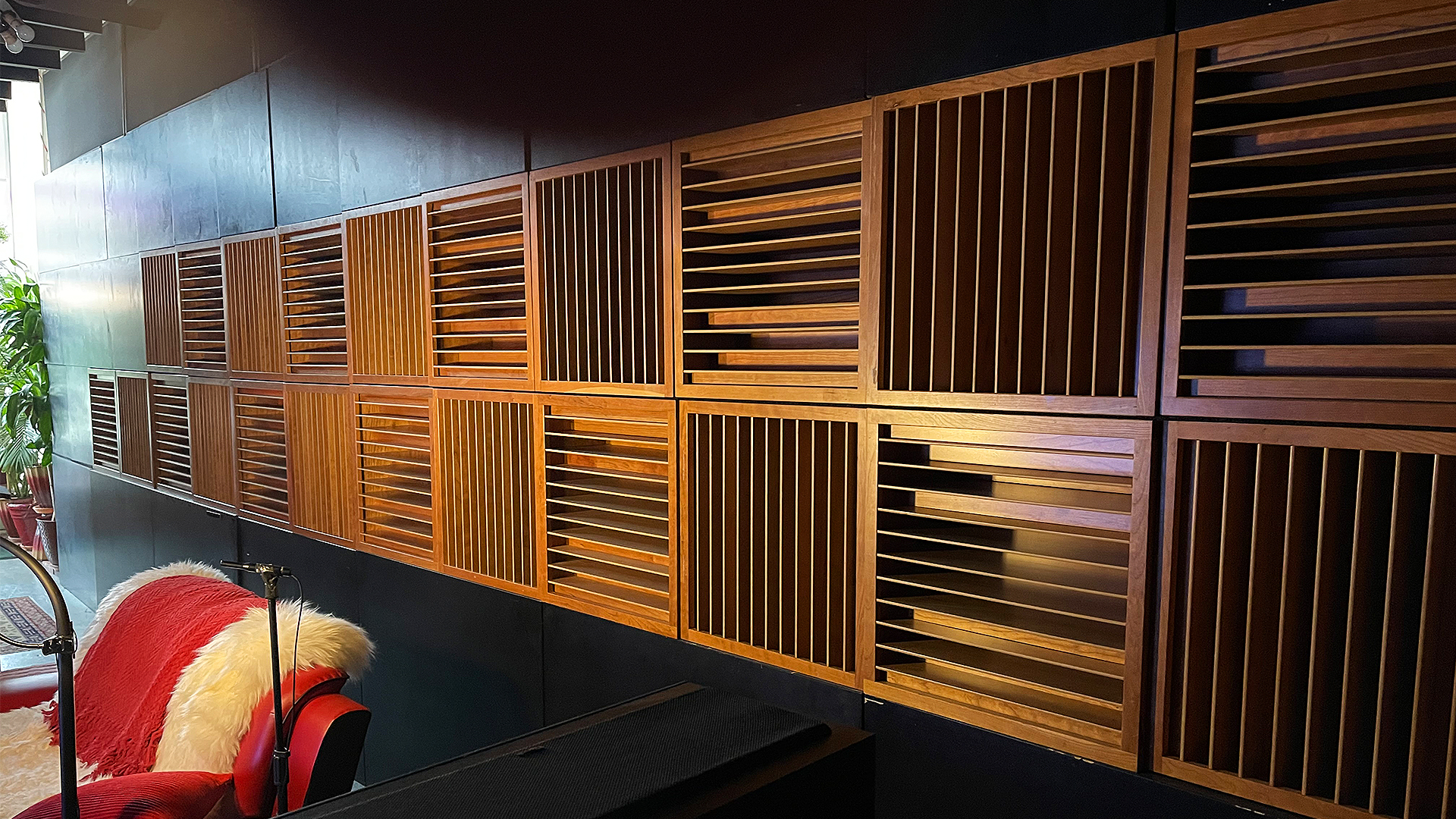
Center speakers for the rear channels
I took the center channel signal and split it into a left center and right channel signal. I also used the same speaker type that was used for the left and right channels. With this approach, we have a soundfield that is all in the same distribution array. None of this horizontal center channel speaker nonsense where the speaker is tucked into a cabinet that minimizes horizontal signal distribution with a distribution array that is different from the left and right channels. All front of the house speakers are operating using the same distribution pattern. All are the same brand and type. Predictability and consistency are a must when you have multiple channels of energy. I have heard many multiple channel systems and none of them sounded realistic to me. I always noticed how out of timbre balance and how low the resolution was in the rear channels. The rear channels seemed to me to be an afterthought that supported my multi channel gimmick theory. With our new system set up, we used center channel speakers for the rear channels. We have discovered that they are more predictable and resolute when it comes to background vocals and audience sounds.
Our system started with a room that measures 36′ wide, 15′ high, and 25′ deep. This room size is created by placing our ACDA modules along all 4 walls. We have a combination of ACDA-10/12 modules to create our walls. With this approach we wrap the room in low frequency management which is a must with any theater setup if we are concerned with resolution. Our rear wall is two dimensional diffusion based upon our QDA-13 modules along with our ACDA-12 technologies for the diffusion modules to sit upon. Placing rear wall diffusion in a theater works the same way as it does within a mix room. It makes the rear wall acoustically disappear and with this sonic benefit, the room sounds larger. Ceiling is absorption for reverberation management using our foam technology. Floor to ceiling pressure issues are dealt with using our ACDA-10 and ACDA-12 modules as in the sidewalls. Floor to ceiling reflections are managed by our foam technology for the front channels and also for the floor to ceiling for the rear channels. Follow us through this multiple channel journey as the year passes. We will start with low-frequency pressure mapping in our next video.
3D Visualization
Throughout the year we will look at overall room frequency response, pressure mapping, reflection managemnt along with diffusion. We will show the power of treatment in the analog domain against anything the room can throw at us. There will be no signal processing other than moving channel output around. Let’s beat the room in the analog domain. Our goal will be +/- 2 dB across the 30 hz. – 16 k. Stay tuned.
Products in this project
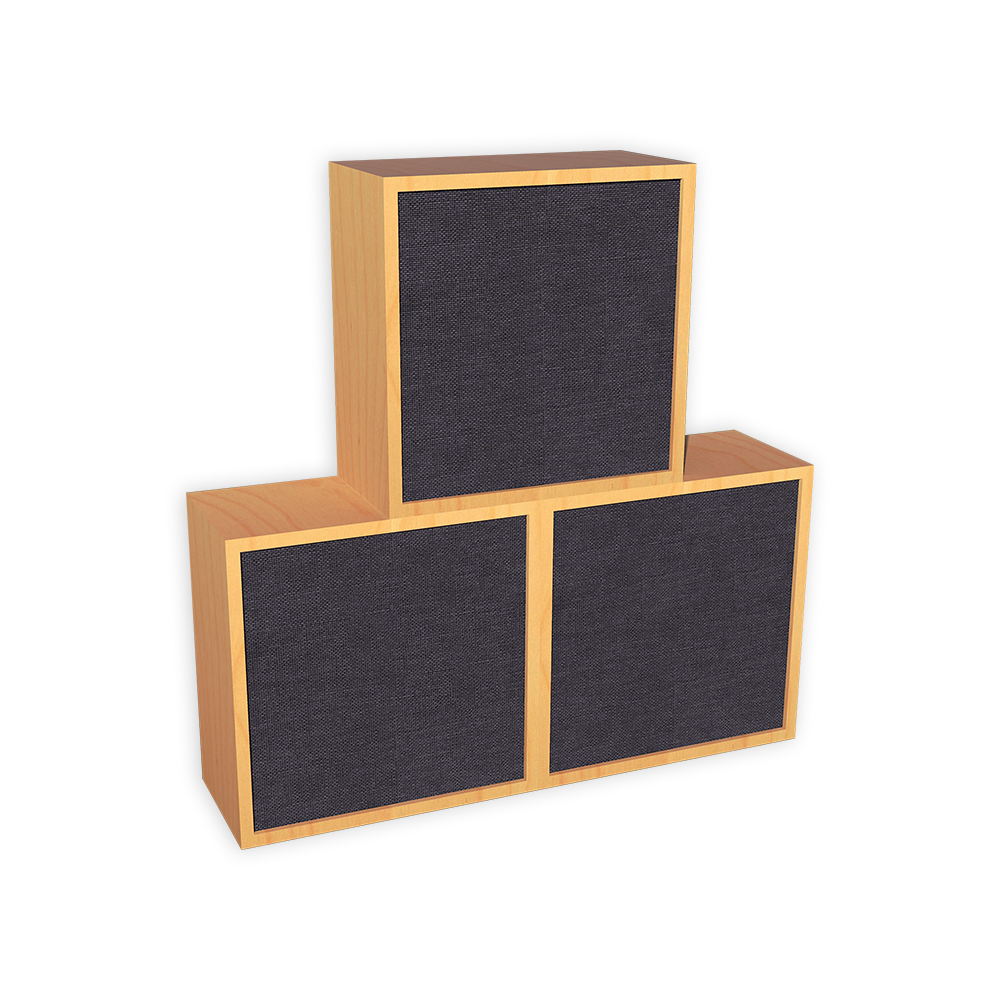
ACDA-10 M
The ACDA -10 modules are our highest performing product. They follow the absorption coefficients of the ACDA-10 with a stronger emphasis on the 60 – 80 Hz. range. The full range absorption for each module is 30 Hz. – 6,500 Hz.
This increased performance comes in a module that is 24″ x 24″ x 12″ and weighs 70 lbs. Modules are stackable and the number and surface area coverage can be fined tuned in your room size/volume/usage.
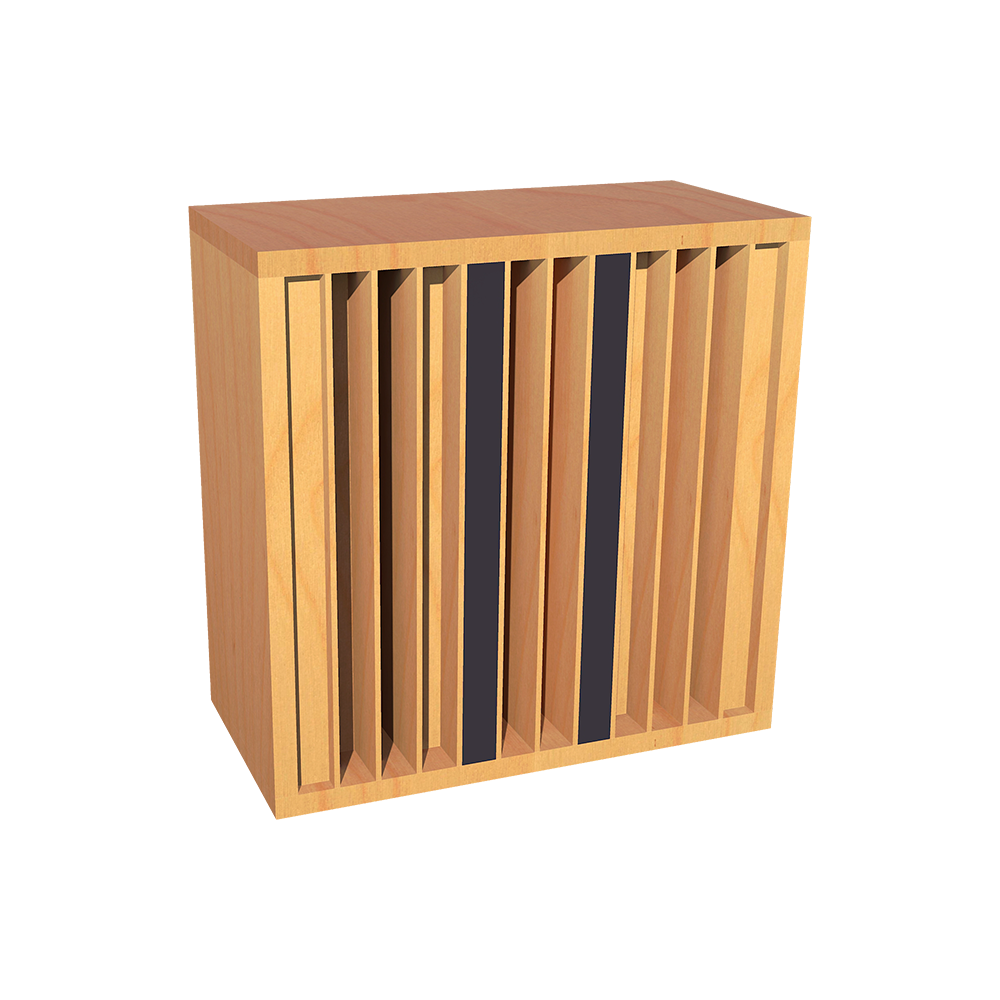
QDA-13 M
It is important to have both frequency-specific and broadband low-frequency absorption on all wall surfaces. Our QDAM-13 has our carbon technology installed inside the diffuser itself. You achieve the same performance as our ACDA-10M and the power of prime number 13 diffusion all in our 24″ x 24′ x 12″ d module that you can stack and create both one dimension and two dimension diffusion.
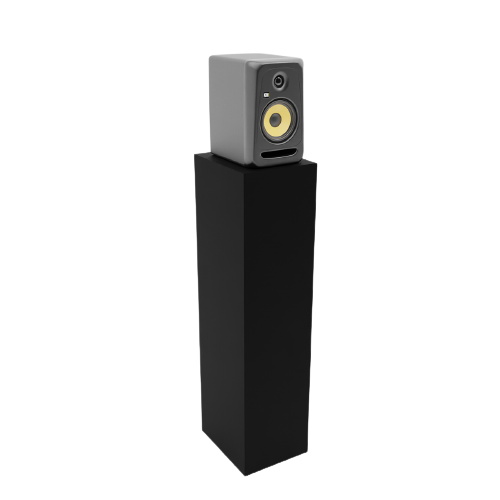
Speaker Carbon Platform
Speaker cabinets are really miniature rooms. As your diaphragm (speaker) moves inside the cabinet, reflections and unwanted low frequency pressure issues inside the cabinet color the sonic energy that is then released through your speaker drivers and into your listening room. To minimize the transmission of vibration and internal cabinet, time delayed reflections that come through the low frequency driver in the cabinet, we use our carbon technology in our SCP which stands for Speaker Carbon Platform.
Do you want to solve your room acoustic problems?
There’s no one size fits all when it comes to room acoustics.
Get your FREE personal room acoustics analysis by chief acoustics engineer Dennis Foley.


